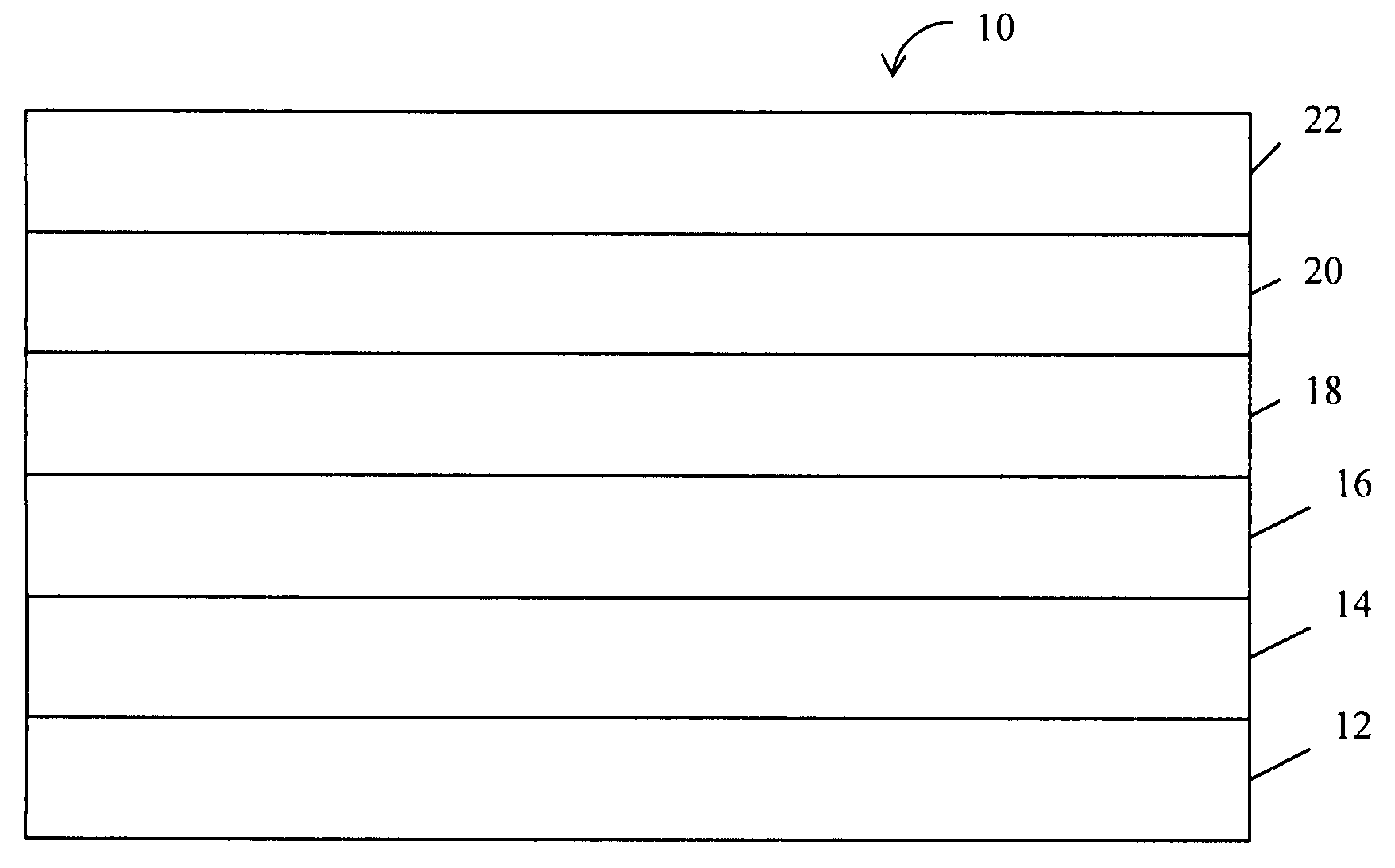Food sterilization dosage indicator
a food sterilization and dosage indicator technology, applied in the field of multi-layer devices, can solve the problems of inability to measure the low dosage of gamma radiation typically used in photographic films, undesirable taste, color or mouth feel variations, and the cooking of food, so as to improve the selectivity improve the stability of the food sterilization dosage indicator
- Summary
- Abstract
- Description
- Claims
- Application Information
AI Technical Summary
Benefits of technology
Problems solved by technology
Method used
Image
Examples
example 1
[0052]An ion-sensitive ink mixture was prepared as follows. 120 parts of Polidene 33-004 was heat-treated at about 40° C. for 168 hours. 0.92 parts ethyl orange was dissolved in 4.7 parts soft water at about 49° C., then cooled to about 22° C. 1.87 parts Chivacure BF-1172 was dissolved in 4.5 parts N-methyl pyrrolidone at about 22° C. 0.026 parts FD&C Blue was dissolved in 3.474 parts water at about 22° C. The ethyl orange, Chivacure, and FD&C Blue solutions were added to the Polidene, with stirring. 2 parts Rheolate 288 was added and stirred until few or no lumps remained. The mixture was allowed to deair for about 16 hours. If any foam was observed, 2-3 drops of nonyl alcohol was added.
example 2
[0053]An ink mixture was prepared as for Example 1, except that the photoinitiator used in Example 2 was R-GEN 1130 instead of BF-1172. The ink mixtures of Examples 1-2 were applied to a substrate of 60 lb. Litho paper at a thickness of 1 mil, using a commercially available coating machine equipped with a wire wound bar metering system, and dried to a tack-free state to form indicator layers.
[0054]These layers were exposed to various dosages of gamma radiation, and the color change was measured by using a Pantone Book and assigned a Pantone Color Number as shown in Table 1. A Pantone Color Number of 391 corresponds to green, 198 corresponds to pink, and 201 corresponds to maroon.
TABLE 1Chemical(parts by weight)Example 1Example 2Polidene 33-00442.042.0Water17.617.6Ethyl Orange3.533.53Rheolate 2881.01.0FD&C Blue0.00020.0002R-GEN BF 11725.02—R-GEN 1130—5.02Exposure dosage (kGy)Pantone ColorPantone Color317883905179539791797131Polidene 3 3-004 is an aqueous emulsion of a vinylidene chlo...
examples 3-5
[0055]Example 3 was prepared as for Example 2, i.e. the substrate was 60 lb. Lithopaper. Example 4 was prepared as for Example 3, except that the substrate was 0.00035 inch aluminum foil-coated paper. Example 5 was prepared as for Example 3, except that the substrate was 0.002 inch aluminum foil-coated paper. The layers were tested and the results are shown in Table 2.
TABLE 2ExposuredosageExample 3Approx.Example 4Approx.Example 5Approx.(kGy)Pantone ColorColorPantone ColorColorPantone ColorColor1.5382chartreuse green124almost light tan111medium olive green3390light chartreuse1245very light olive118olive green withgreenyellow5397light chartreuse125very light olive131darker yellow tangreen9131yellow tan167darker yellow tan180rust0104very light olive3975darker olive green111slightly darker olivegreengreen
PUM
 Login to View More
Login to View More Abstract
Description
Claims
Application Information
 Login to View More
Login to View More - R&D
- Intellectual Property
- Life Sciences
- Materials
- Tech Scout
- Unparalleled Data Quality
- Higher Quality Content
- 60% Fewer Hallucinations
Browse by: Latest US Patents, China's latest patents, Technical Efficacy Thesaurus, Application Domain, Technology Topic, Popular Technical Reports.
© 2025 PatSnap. All rights reserved.Legal|Privacy policy|Modern Slavery Act Transparency Statement|Sitemap|About US| Contact US: help@patsnap.com


